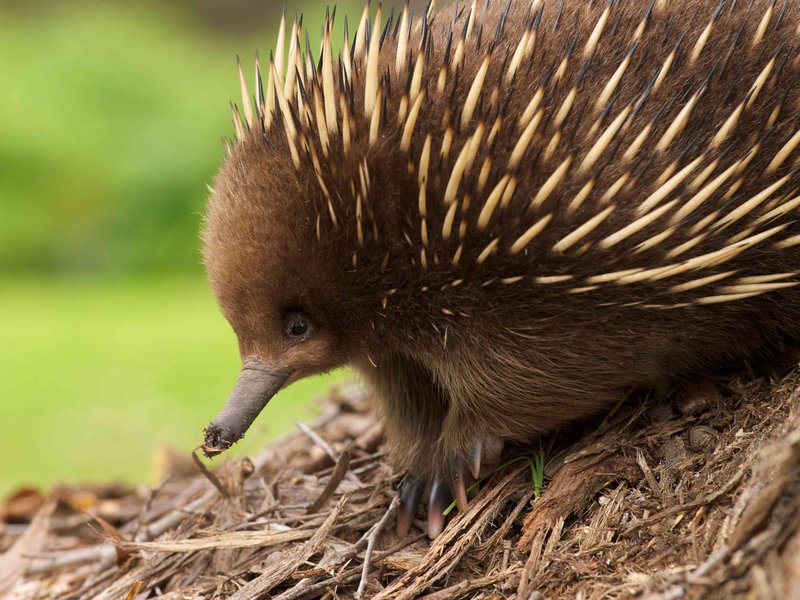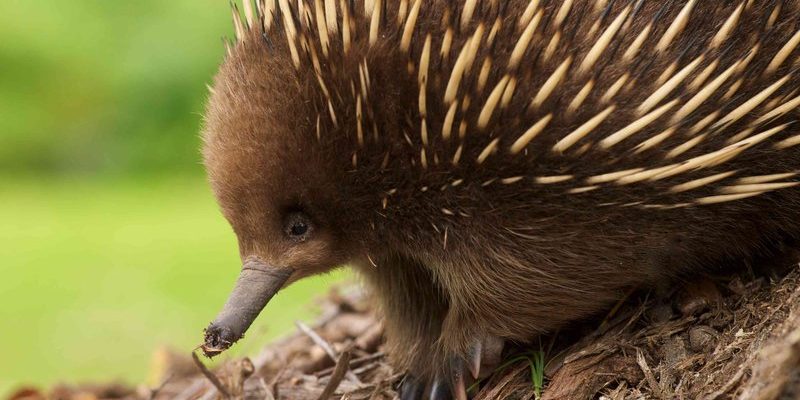
Echidnas are often called “spiny anteaters,” and while they might look a bit odd, they’ve been around for millions of years. Their story is one of survival and adaptation, showcasing how life on Earth can take unexpected paths. So grab your favorite drink, and let’s dive into this incredible journey together.
What Are Echidnas?
To really appreciate the echidna’s evolutionary journey, it’s essential to know what they are. Echidnas belong to a small group of egg-laying mammals called monotremes. Unlike most mammals that give birth to live young, monotremes lay eggs. It’s a bit like going back in time to when the first mammals were emerging from reptilian ancestors.
Echidnas are characterized by their spiky fur, long snouts, and short legs. They’re usually found in Australia and New Guinea, and they love to dig. Their diet mainly consists of ants and termites, which they catch using their sticky tongues. It’s almost poetic how these little creatures have adapted so uniquely to their environments!
You might be wondering why echidnas matter in the grand scheme of evolution. Well, they provide a fascinating glimpse into the ancient past of mammals, showing us how diverse life can be. Their reproductive method and physical characteristics remind us of a time long before the mammals we see today evolved.
Monotremes: The Unique Egg-Layers
Echidnas belong to a special group of animals known as monotremes. This group is pretty exclusive, with just a couple of members: the echidna and the platypus. Monotremes are thought to have split from the rest of the mammals around 250 million years ago. They represent a bizarre but fascinating link to our past, showcasing how evolution can create such different yet connected forms of life.
Let’s break down what makes monotremes so unique. Unlike other mammals, they lay eggs instead of giving birth to live young. When echidna eggs hatch, the mother produces milk to nourish her young, even though they don’t have teats like most mammals. Instead, the milk seeps through openings in the skin. Imagine that—tiny, spiky babies drinking milk from their mother’s skin!
This unusual reproductive method challenges the typical definitions of mammalian biology. It makes you think about how animals adapt to their environments and develop traits that suit their survival needs. These quirks are a window into the evolutionary history of mammals and how life can take various forms.
A Glimpse Into Their Fossil Record
Fossil evidence provides some intriguing insights into the evolutionary history of echidnas. The oldest known monotreme fossils date back to the early Cretaceous period, around 145 million years ago. These ancient relatives help us piece together the story of how echidnas evolved.
Most notable is a fossil called *Steropodon*, discovered in Australia, which lived around 100 million years ago. Scientists believe that *Steropodon* could lay the groundwork for understanding how present-day echidnas and platypuses evolved. These fossils show us that the lineage of echidnas stretches back much further than many modern mammals, putting them on a pedestal of ancient lineage.
The fossil record reveals a slow, steady evolution. Over millions of years, echidnas adapted to their environments, changing their size and shape to better survive in their habitats. This slow evolution illustrates how life on Earth is often a gradual journey rather than a sudden leap.
Evolutionary Pathways: From Dinosaurs to Echidnas
To put echidnas into perspective, it’s helpful to look at their evolutionary pathway. Monotremes share a common ancestor with reptiles, which means they offer clues about the transition from reptiles to mammals. Imagine how exciting it would be to see the world of dinosaurs from the perspective of these ancient creatures!
Echidnas evolved in isolation on the Australian continent. This isolation led to unique evolutionary pressures that shaped their characteristics. For instance, while marsupials (like kangaroos) and placental mammals were evolving in other parts of the world, echidnas persisted with their ancient traits.
This journey highlights an essential aspect of evolution—adaptation. The echidna’s spiny exterior protects it from predators, while its digging habits allow it to forage for food effectively. These adaptations help them thrive in a landscape that could be harsh, showcasing the resilience of life.
The Role of Echidnas in Their Ecosystem
Echidnas play a crucial role in their ecosystems, particularly in controlling insect populations. Because they feast on ants and termites, they help keep these populations in check. Without echidnas, these insects could multiply unchecked, leading to imbalances in the ecosystem.
When echidnas dig for food, they also aerate the soil. This digging habit allows nutrients to mingle and supports the growth of vegetation. In many ways, they’re little ecological engineers, contributing to the health of their habitats.
By observing how echidnas interact with their environment, we gain insights into the complexities of ecosystems. Here’s the thing—every creature, no matter how small, has its part to play in the grand tapestry of life.
Modern Challenges for Echidnas
Despite their fascinating evolutionary history, echidnas face modern challenges. Habitat loss due to urban development, climate change, and human activity poses significant threats to their populations. As more natural habitats disappear, echidnas struggle to find safe spaces to live and feed.
Additionally, they are susceptible to diseases, such as a fungal infection called *chytridiomycosis*. This devastating disease impacts echidnas and other wildlife, highlighting the importance of conservation efforts to protect these unique animals.
Efforts to conserve echidnas are crucial. Protecting their natural habitats and addressing the threats they face can ensure that future generations will have the chance to explore and appreciate these remarkable creatures. Our responsibility as stewards of the Earth is to acknowledge their importance and fight to keep them part of our world.
The evolutionary history of the echidna is a captivating tale of adaptation and resilience. From ancient times to the modern world, these unique creatures have survived against the odds, offering us a glimpse into the past of mammals. Each echidna tells a story—not just of survival but of evolution itself, highlighting how interconnected life on Earth truly is.
As we continue to learn about echidnas and their history, we also gain a deeper understanding of the importance of biodiversity. Protecting these remarkable animals ensures that their story—and the rich history of life on our planet—continues. After all, wouldn’t it be a shame to lose such a wonderful little creature? So, next time you spot an echidna, remember the incredible journey it has taken through time.

